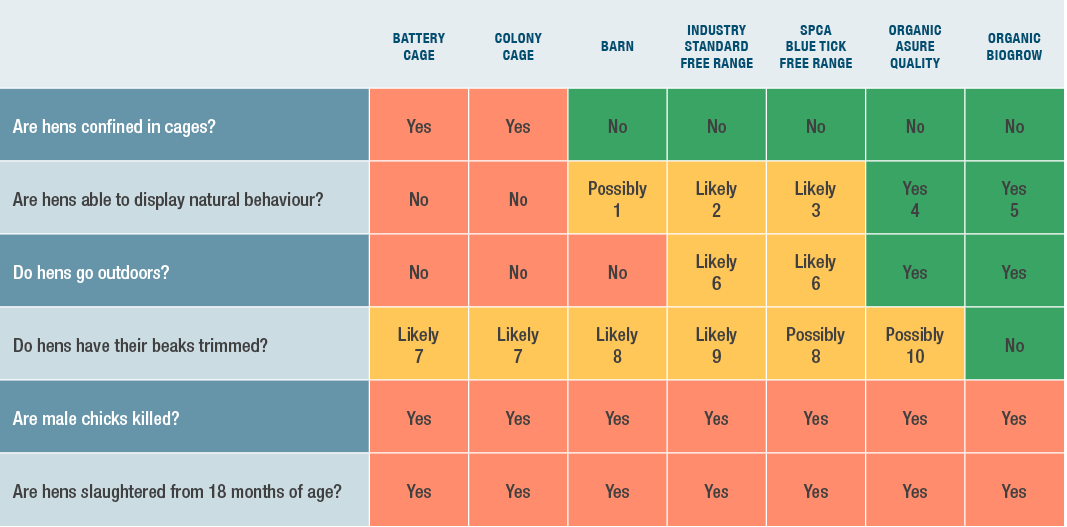Over three million hens live short and cruel lives crammed into wire cages. Eighty-two per cent of the one billion eggs consumed in New Zealand are produced by hens that spend their entire lives on an individual floor space barely larger than an A4 sheet of paper.

So, with misleading packaging, standards and claims adding to shopper confusion, how can you avoid supporting cruelty?
In 2006, to forestall government intervention, egg producers agreed to voluntary labelling of eggs, and while this partly happened it is not industry-wide or mandatory nor is the labelling always accurate.
Words like ‘free to roam’, ‘cage-free’ and images of the countryside and sunshine on egg cartons lead the average New Zealander to think of happy hens dust-bathing and foraging in fresh air and green pastures—exactly what the egg producers want us to imagine—rather than the reality of large sheds confining tens of thousands of hens.
Shockingly, many ‘free-range’ hens may never actually get to experience being outside. To add further to the confusion, labels on eggs produced in the new colony cages do not mention that these eggs are produced by caged hens.
The egg industry’s use of positive terms such as ‘Farm fresh’ and ‘Colony laid’, misleads consumers and serves to divert attention away from the unpalatable reality of egg production. High stocking densities limit the hens’ ability to display natural behaviour and/ or exercise freely.
Free-range
While hens must have ‘access to outdoors, there are a number of variables between brands including the required size of the outdoor range area, time flocks spend outdoors, and maximum number of hens per flock.
A number of hens may never actually go outside, but their eggs can still be labelled as free-range. Hens are very territorial and do not like to cross another bird’s space, preventing some from going outside.

SAFE unravels the mystery of egg labelling, from caged to organic
1. For blue tick-approved barn eggs (indoor housing only) hens are kept at a stocking density of seven hens per m2.
2. The code of welfare for hens allows them to be kept at a stocking density (in their indoor area) of nine hens per m2 and 2,500 hens per hectare outdoors.
3. SPCA-approved free-range egg hens are kept at a maximum stocking density of nine hens per m2 of covered/roofed area and 875 hens per hectare outdoors.
4. AsureQuality hens are kept at a stocking density (in their indoor housing) of six hens per m2. Outdoors, the stocking density is 850 hens per hectare.
5. Biogro hens are kept at a stocking density (in their indoor housing) of six hens per m2. Outdoors the stocking density is 833 hens per hectare.
6. There is no industry certification for ‘free-range’ in New Zealand. Legally, stocking of the outdoor ranging area must not exceed 2,500 hens per hectare.
7. Most caged hens are beak-trimmed.
8. Not a ‘standard’ treatment for Blue Tick Free Range, but infra-red beak trimming, (IRB), may be allowed under the direction of a veterinarian on day-old chicks.
9. IRB is allowed up to three days after hatching, and afterwards with veterinary approval.
10. IRB may be approved by AsureQuality for day day-old chicks but “must not be carried out systematically”.
